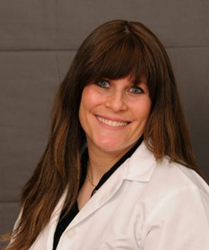
Rebecca Sklar, RPA-C
As our body’s most abundant protein, collagen is a connective fiber that plays a key role supporting our bones, muscles and skin.
STATEN ISLAND, N.Y. (PRWEB)
March 25, 2021
“It starts in our twenties,” notes Rebecca Sklar, a certified registered physician assistant specializing in dermatology with Advanced Dermatology PC. “The thought of wrinkles may be years away, but the collagen that keeps our skin wrinkle-free has already started to decline.” As our body’s most abundant protein, collagen is a connective fiber that plays a key role supporting our bones, muscles and skin.
“Collagen builds the framework that our skin rests on,” explains Sklar. “As we lose our supply of collagen, that underlying framework is diminished, and our skin settles into the resulting crevices. What we see are wrinkles.” Dermatologists’ awareness of collagen’s integral role in maintaining taut skin has triggered an evolution in treatments over the decades.
“Fifty years ago, early interventions to restore collagen involved animal collagen,” says Sklar, “and early procedures ran higher risks of allergic reactions. We’ve seen incredible advances since then, with a trend toward treatments that harness the body’s own collagen production. We’ve also learned how combining procedures can maximize results.”
“Many of today’s choices are minimally invasive,” continues Sklar, “and, with bio-identical materials and by stimulating the body’s own collagen production, there is a decreased risk of allergic reactions.”
New improved options have seen growing demand, with the American Society of Plastic Surgeons reporting more than 2.7 million dermal-filler injections alone in 2019, in addition to other collagen-stimulating procedures.
“Today, there is an extensive menu of choices,” observes Sklar, “from surface stimulating treatments such as microneedling to injectables like Sculptra. These increased options offer patients more of an opportunity to customize their treatment.”
To optimize the latest collagen-replacing procedures, Sklar has the following suggestions:
Five Tips to Maximize the Power of Collagen
1. Make the most of fillers: “Today’s fillers,” shares Sklar, “include options such as Radiesse, which adds volume and also boosts collagen, as well as Sculptra, which stimulates the body’s own collagen production and is then absorbed. Patients can consider their own preference in terms of the level of intervention and their desired results.”
2. Jumpstart your collagen with a surface treatment: “Microdermabrasion, microneedling, lasers, radiofrequency, ultrasound,” lists Sklar. “These surface treatments extend below to trigger our skin’s replenishment of collagen. We’ve seen great results with options such as the Fraxel laser, Ultherapy ultrasound, Thermage radiofrequency, and Intensif Microneedling, which pairs microneedling with radiofrequency. Your specialist can help you choose the approach that’s the best fit for you, considering factors like cost, the number of treatments needed, and the expected duration of results.”
3. Synergize to max your results: “Combining techniques can be more than a one-plus-one gain,” advises Sklar. “Botox paired with fillers or collagen-stimulating treatments can boost the overall impact, improving on individual results. Likewise, Collagen P.I.N. combines microneedling stimulation with hyaluronic acid, another key substance our skin needs to maintain firmness.”
4. Remember the essentials: “The sun plays a big role in our loss of collagen,” emphasizes Sklar, “so to make the most of any treatments, it’s important to stay vigilant: Not just sunscreen, but cover-ups and seeking shade.”
5. Choose your specialist with care: “Faces are complex,” observes Sklar. “There are more than forty muscles, and each individual has a unique structure. There is also the need to establish clear communication about goals and expected results. It is crucial to work with someone who has expertise and with whom you feel comfortable.”
“The recent breakthroughs in collagen treatments,” concludes Sklar, “means it’s not too late to address the aging that started when we were young.”
Bio: Rebecca Sklar, RPA-C is a certified physician assistant through the National Commission of Certification of Physician Assistants.
Advanced Dermatology P.C. and the Center for Laser and Cosmetic Surgery (New York & New Jersey) is one of the leading dermatology centers in the nation, offering highly experienced physicians in the fields of cosmetic and laser dermatology as well as plastic surgery and state-of-the-art medical technologies. http://www.advanceddermatologypc.com.
Share article on social media or email:

